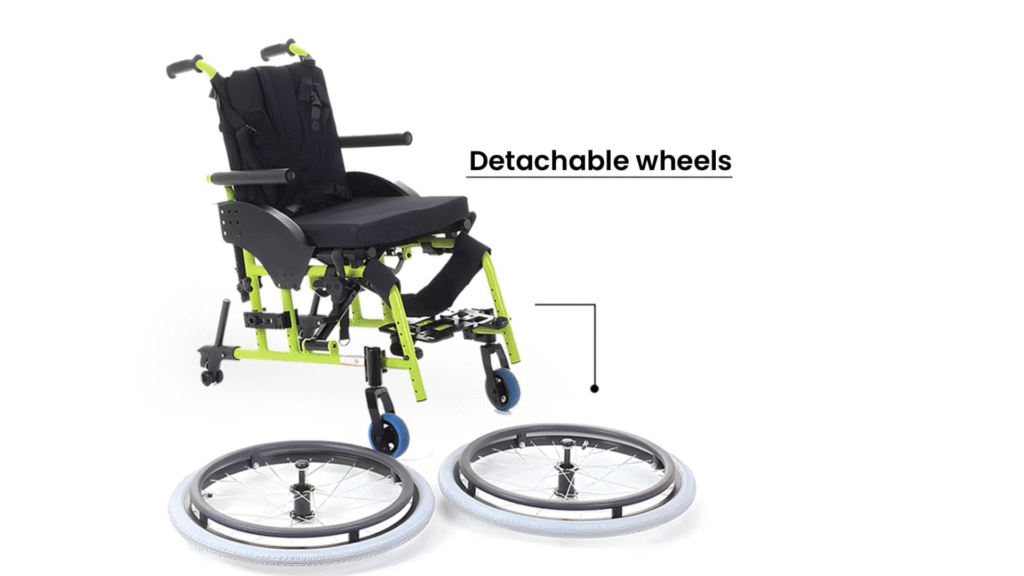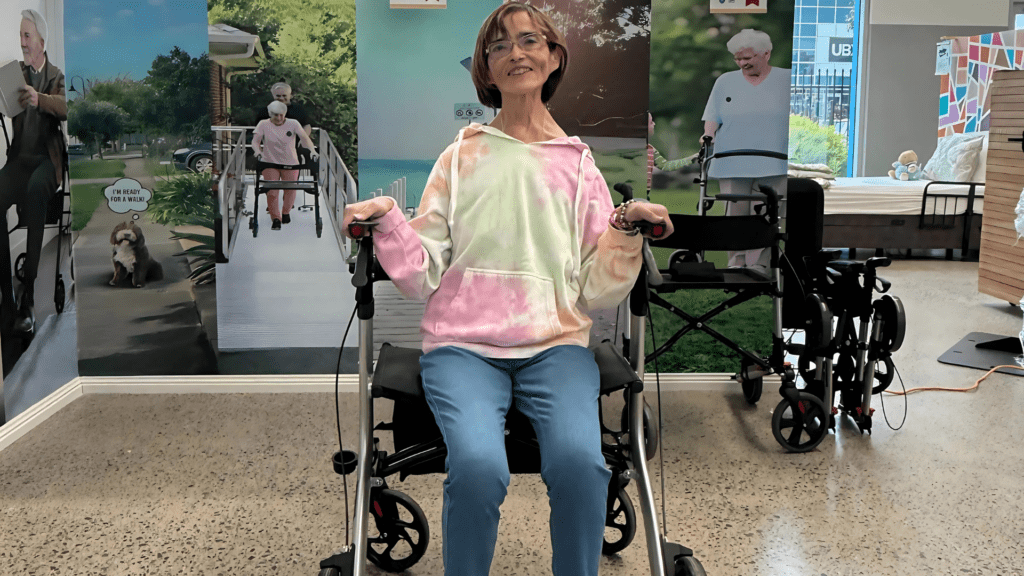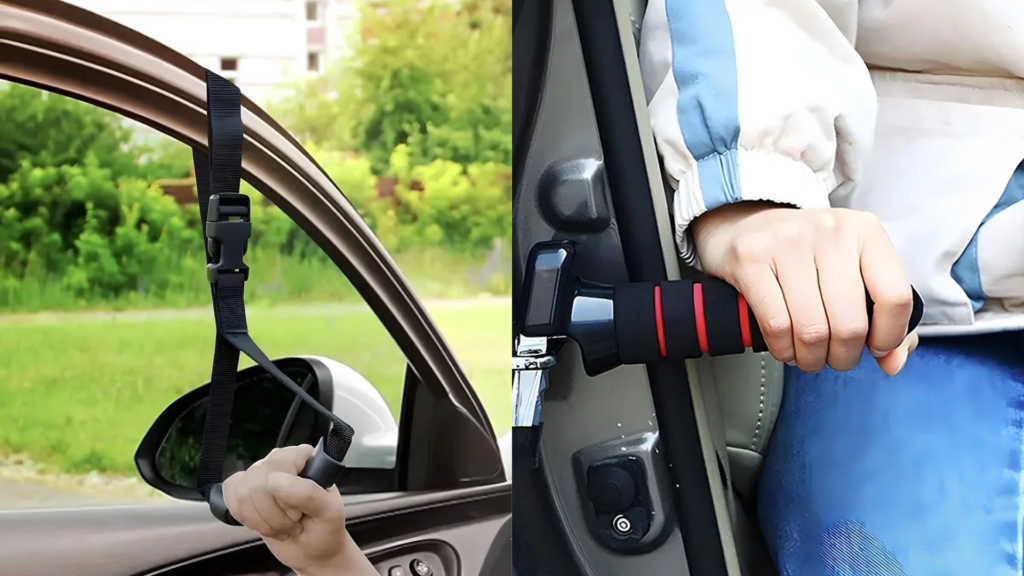Children with complex mobility needs often require more than just a standard paediatric wheelchair. For many, a tilt-in-space paediatric wheelchair offers essential positioning, pressure relief, and comfort that supports long-term health and daily participation in life activities. Selecting the right model requires careful consideration of clinical needs, family routines, and funding pathways like NDIS.
What Is a Tilt-in-Space Wheelchair?
A tilt-in-space wheelchair allows the entire seat and backrest to tilt backward in one smooth motion without changing the hip angle. This design is different from a recline function, which increases the angle between the back and the seat. Tilt-in-space systems maintain proper posture while redistributing pressure away from vulnerable areas such as the pelvis and lower spine.
These chairs are often prescribed for children who:
- Have poor trunk control
- Are non-weight bearing
- Experience pressure injuries
- Require frequent repositioning throughout the day
They’re commonly used in both home care and school environments and can be integrated into therapy routines.
To explore general mobility options for growing children, see our paediatric wheelchair collection.
Who Benefits Most from Tilt Features?
Tilt-in-space wheelchairs are designed for children with high physical support needs, including:
- Neuromuscular conditions (e.g., cerebral palsy, muscular dystrophy)
- Severe scoliosis or spinal instability
- Chronic fatigue or orthopaedic limitations
- Frequent seizures or uncontrolled motor movement
These users typically require headrests, lateral supports, pelvic belts, or foot positioning aids, all of which work best when the chair includes tilt capability for optimal seating posture.
Proper tilt also assists with respiratory and digestive health, allowing the child to rest or reposition safely while remaining in their chair.
Essential Adjustability and Positioning Features
When selecting a tilt-in-space paediatric wheelchair, ensure it includes:
- Multi-angle tilt range (typically 0–45°) for pressure relief and fatigue management
- Customisable headrests, lateral supports, and pelvic belts
- Adjustable seat depth, width, and back height to accommodate growth
- Compatibility with communication devices or tray tables
- High-quality cushioning or pressure-relief systems
Models like the Growmate Paediatric Wheelchair may be appropriate in earlier stages if combined with additional support accessories. For more complex cases, custom seating systems prescribed by an occupational therapist are often necessary.
Tilt-in-space systems should always be fitted by an allied health professional who understands the child’s physical condition, school setting, and family environment.
Safety, Transport, and School Use
Tilt-in-space chairs can be heavier than standard paediatric wheelchairs, so transport and handling are important considerations. Key points include:
- Crash-tested models for safe vehicle travel
- Transit tie-down systems for bus or van access
- Foldable frames or quick-release components for easier lifting or car storage
- Wheel locks and anti-tip bars for extra stability
For school-aged children, ensure the chair fits under classroom tables and provides comfort during prolonged sitting. Many families also request multiple seating options—such as one tilt-in-space chair for home and another for school—through NDIS when clinically justified.
If you need help understanding your product options or compatibility, our contact page is available to support carers and professionals.
NDIS Support for Complex Mobility Equipment
The National Disability Insurance Scheme (NDIS) supports funding for assistive technology that meets a child’s functional goals. A tilt-in-space wheelchair is classified as Level 4 High-Risk Assistive Technology and requires:
- A detailed occupational therapist assessment
- Clinical justification for each postural feature
- Quotes from a registered provider
- Consideration of setup, delivery, and trial
It is also possible to request equipment trials before committing to purchase, helping families ensure the solution is suitable for daily use.
Families and therapists often work together with registered suppliers like Care With Us to identify, trial, and submit quotes for complex devices. For a smoother process, it’s advisable to include growth forecasting, secondary use (school/home), and maintenance plans in the initial report.
FAQs: Tilt-in-Space Paediatric Wheelchairs
Q1. What is the main difference between a recline and a tilt-in-space wheelchair?
A: A recline wheelchair increases the angle between the backrest and seat, while a tilt-in-space system moves both together, preserving posture. Tilt is safer for children with trunk instability or postural control needs.
Q2. Are tilt-in-space wheelchairs adjustable as my child grows?
A: Yes. Most models include adjustable seat depth, width, and back height. Custom seating systems may also be modified as your child grows with the help of an OT and a registered provider.
Q3. Can I get a tilt-in-space wheelchair funded through NDIS?
A: Yes, but only with a detailed OT assessment and justification. The device must meet your child’s mobility, posture, and health requirements. It is typically considered Level 4 assistive technology.
Q4. How do I transport a tilt-in-space wheelchair in a car?
A: Many models can be disassembled or have foldable frames. However, due to their larger size, you may need a larger vehicle or a wheelchair-accessible vehicle for easy transport.
Q5. Is the Growmate suitable for tilt-in-space needs?
A: The Growmate is a highly adjustable chair for growing children but does not include tilt-in-space as a core feature. Children requiring tilt would benefit from more specialised models prescribed by an OT.



